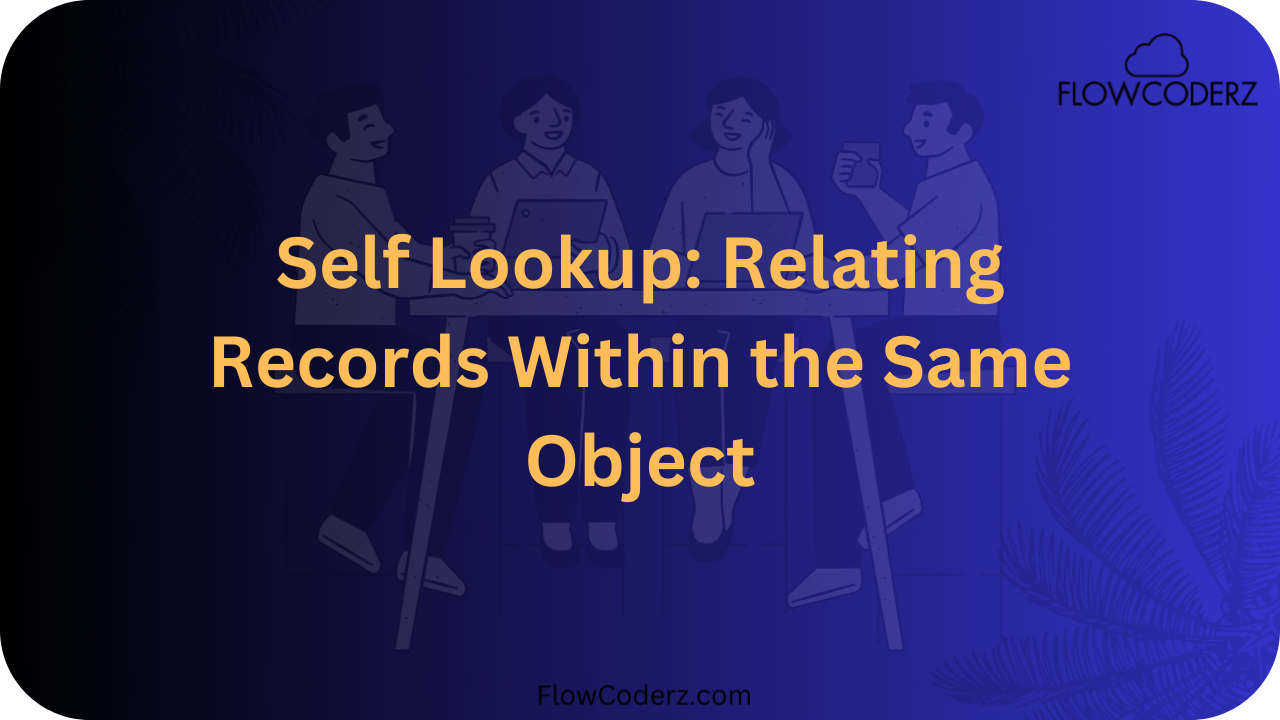When working with Salesforce, we often create relationships between different objects. But what if we need to relate a record to another record in the same object?
That’s where a Self Lookup (also called Recursive Lookup) comes in.
1. What is a Self Lookup in Salesforce?
A Self Lookup is a type of relationship where an object has a lookup field that points back to itself.
👉 This means a record in the object can be related to another record of the same object.
2. Why Do We Need Self Lookup?
Self Lookups are useful when records naturally form hierarchies or networks within the same object.
Some common use cases:
- Employee ↔ Manager relationship (both are Employees).
- Account Hierarchy (Parent Account and Child Account).
- Category ↔ Subcategory in product catalogs.
- Task Dependencies (one Task depends on another Task).
3. Example: Employee ↔ Manager
Imagine an Employee object with a self lookup field called Manager.
- Employee A (Manager) → Manages Employee B and Employee C.
- Employee D → Reports to Employee B.
This creates a hierarchy inside the same object.
4. How to Create a Self Lookup Relationship
Step 1: Go to Object Manager
- Example: Select Employee object (custom object).
Step 2: Create a Lookup Field
- Field Type → Lookup Relationship.
- Related To → Employee (same object).
Step 3: Name the Field
- For example: Manager (Lookup(Employee)).
Now each Employee record can reference another Employee as their Manager.
5. How It Works
- Employee record has a field Manager (lookup to Employee).
- By filling this field, one employee record becomes linked to another employee record.
- This creates a recursive relationship within the same table.
6. Benefits of Self Lookup
- Enables hierarchies within the same object.
- Provides flexibility for parent-child structures.
- Supports reporting on nested relationships (like Org Charts, Account Hierarchies).
- Helps in data modeling without creating unnecessary extra objects.
7. Key Takeaways
- A Self Lookup allows records to be related within the same object.
- Great for hierarchies: Employee ↔ Manager, Parent ↔ Child Account, etc.
- Easy to implement using a Lookup Relationship that points to the same object.
- Provides powerful modeling for real-world data in Salesforce.
Pro Tip:
Use Hierarchy reports or custom tree-like visualizations to make self lookup structures easier to understand for end-users.

